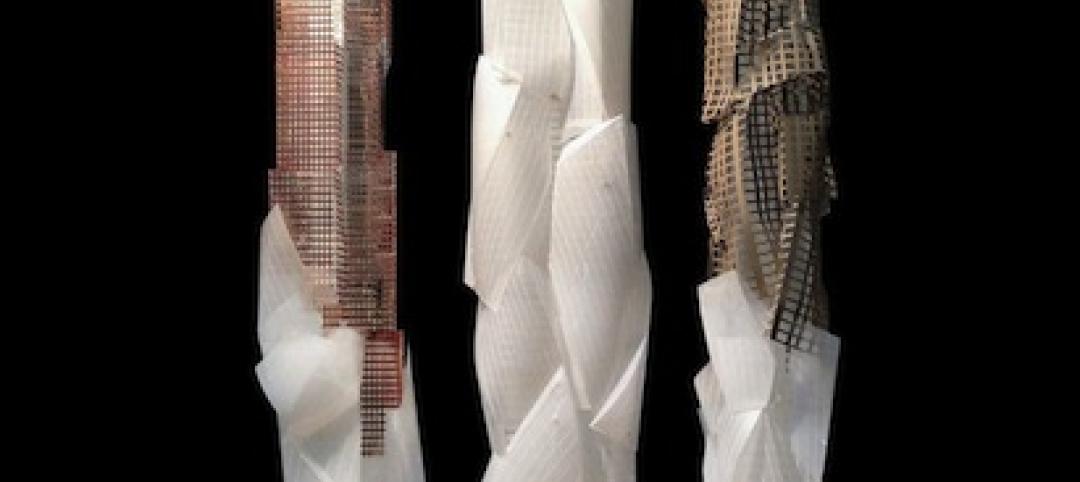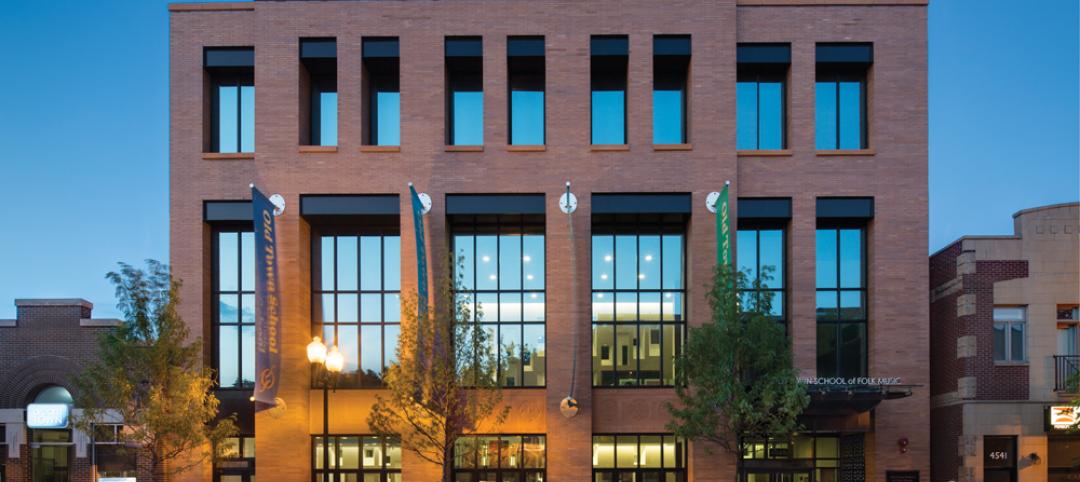 |
|
The newly renovated Fox Oakland Theater is the centerpiece of a plan to revitalize the Uptown district and bring people back to downtoan Oakland. The theater had been boarded up since 1966. |
The story of the Fox Oakland Theater is like that of so many movie palaces of the early 20th century. Built in 1928 based on a Middle Eastern-influenced design by architect Charles Peter Weeks and engineer William Peyton Day, the 3,400-seat cinema flourished until the mid-1960s, when the trend toward smaller multiplex theaters took its toll on the Fox Oakland.
The theater closed in 1966 and dodged demolition several times before making the National Register of Historic Places in 1979. It would remain vacant and in shambles for nearly two decades.
In 1996, then-Mayor Jerry Brown—at the urging of a citizens group called the Friends of the Fox—designated the Fox Oakland Theater the centerpiece of a plan to revitalize the Uptown district and bring people back to the city's core. The city purchased the building and, following several restoration projects between 1999 and 2001 to repair the roof and marquee, embarked on an all-out effort to modernize and transform the theater into world-class performing arts venue and dance school for the Oakland School for the Arts.
 |
|
The Building Team used a series of braces, shear walls, reinforced slabs, and buttresses to stabilize both the new and existing structures without adversely impacting the visual grandeur of the theater. |
Key to the mayor's plan was a public-private funding approach proposed by local developer Phil Tagami that would help cover the $87 million price tag for the project, which included a complete restoration and seismic retrofit of the theater and construction of twin three-story wings for the dance school.
Tagami established both nonprofit and for-profit entities that could contribute funds to the project and benefit from available tax credits and grants. He also worked with city officials and the project's construction manager, Turner Construction, to involve as many local firms and minority- women-owned business enterprises as possible.
“I like how they involved so much of the local workforce,” said Reconstruction Awards judge Matthew H. Johnson, PE, associate principal with Simpson Gumpertz & Heger, Waltham, Mass. “The team split the sub packages into small pieces so that virtually any local firm could work one of the projects.”
To make this delivery approach feasible, the team had to obtain city council approval for a special contracting approach that permitted engaging multiple entities under a management structure. Such an approach is unusual in city projects, which normally are bid in a public, low-bid process that also involves a claims and dispute component. In all, the project created 394 construction jobs, roughly half of which were performed by local workers.
The project scope encompassed 17 major components, including restoring the theater, stage, fly-loft, and supporting infrastructure; stabilizing the 60-foot-tall dome structure over the entrance; reconfiguring the theater floors, stage, orchestra pit, rigging, proscenium, and theater controls; adding theater power, lighting, sound, and air-conditioning systems; and constructing the twin 20,000-sf additions.
But it was the seismic retrofit efforts led by Oakland-based KPA Group that received the most praise from the Reconstruction Awards judges. They were particularly impressed with the Building Team's ability to stabilize both the new and existing structures without adversely impacting the visual grandeur of the theater. The effort involved devising multiple solutions (see diagram), including:
-
Reducing the seismic demands on the main roof diaphragm by inserting new buttresses on each side of the roof mid-span of the diaphragm. These buttresses were also utilized to stabilize the farthest end of the cantilevered balcony structure, eliminating torsion and reducing the demand on the back of theater wall.
-
Reinforcing the proscenium wall and the back-of-theater wall with shotcrete walls and steel framing. The new walls were placed behind existing heavily ornamented walls and are hidden from view.
-
Stabilizing the dome structure with twin U-shaped walls constructed immediately to the north and south of the entrance structure and doweled into the existing walls. The new walls were then interconnected to each other and to the sides of the entrance structure at several levels, thereby boxing the entire dome and entrance building inside new well-reinforced walls designed for the entire lateral load of the dome and entrance structure under the dome.
-
Stabilizing existing brick walls by connecting the brick to a series of structural tubes epoxy bolted into the back of the walls. New steel channels were added to brick pilasters that, in turn, were integrated as part of the street-level façade of the new school buildings.
-
Incorporating a series of horizontal steel tubes, shear walls, a horizontal steel diaphragm structure, and a reinforced slab on grade to stabilize the wraparound buildings.
“It was a good, clean job,” said SGH's Johnson of. “I think they did the seismic retrofit intelligently.”
Related Stories
| Jun 25, 2013
Mirvish, Gehry revise plans for triad of Toronto towers
A trio of mixed-use towers planned for an urban redevelopment project in Toronto has been redesigned by planners David Mirvish and Frank Gehry. The plan was announced last October but has recently been substantially revised.
| Jun 25, 2013
DC commission approves Gehry's redesign for Eisenhower memorial
Frank Gehry's updated for a new Dwight D. Eisenhower memorial in Washington, D.C., has been approved by the Eisenhower Memorial Commission, reports the Washington Post. The commission voted unanimously to approve the $110 million project, which has been gestating for 14 years.
| Jun 17, 2013
DOE launches database on energy performance of 60,000 buildings
The Energy Department today launched a new Buildings Performance Database, the largest free, publicly available database of residential and commercial building energy performance information.
| Jun 14, 2013
First look: Callebaut's eye-popping Möbius building for Taichung arts center
French design firm Vincent Callebaut Architectures has released renderings of "Swallow's Nest," an entry in a design competition for a new cultural center, fine arts museum, and public library in Taichung City, Taiwan. The building, based on a Möbius ring, swirls around a central "Endless Patio."
| Jun 13, 2013
7 great places that represent excellence in environmental design
An adaptive reuse to create LEED Platinum offices, a park that honors veterans, and a grand national plaza are among the seven projects named winners of the 2013 Great Places Awards. The Environmental Design and Research Association recognize professional and scholarly excellence in environmental design, with special attention paid to the relationship between physical form and human activity or experience.
| Jun 12, 2013
5 building projects that put the 'team' in teamwork
The winners of the 2013 Building Team Awards show that great buildings cannot be built without the successful collaboration of the Building Team.
| Jun 11, 2013
Music/dance building supports sweet harmony [2013 Building Team Award winner]
A LEED Gold project enhances a busy Chicago neighborhood, meeting ambitious criteria for acoustical design and adaptability.
| Jun 7, 2013
First look: Austin breaks ground on 'light-filled' Central Library
The design scheme by Lake|Flato and Shepley Bulfinch incorporates reading "porches" and a light-filled, six-story atrium.
| Jun 5, 2013
USGBC: Free LEED certification for projects in new markets
In an effort to accelerate sustainable development around the world, the U.S. Green Building Council is offering free LEED certification to the first projects to certify in the 112 countries where LEED has yet to take root.
| Jun 3, 2013
Construction spending inches upward in April
The U.S. Census Bureau of the Department of Commerce announced today that construction spending during April 2013 was estimated at a seasonally adjusted annual rate of $860.8 billion, 0.4 percent above the revised March estimate of $857.7 billion.
















